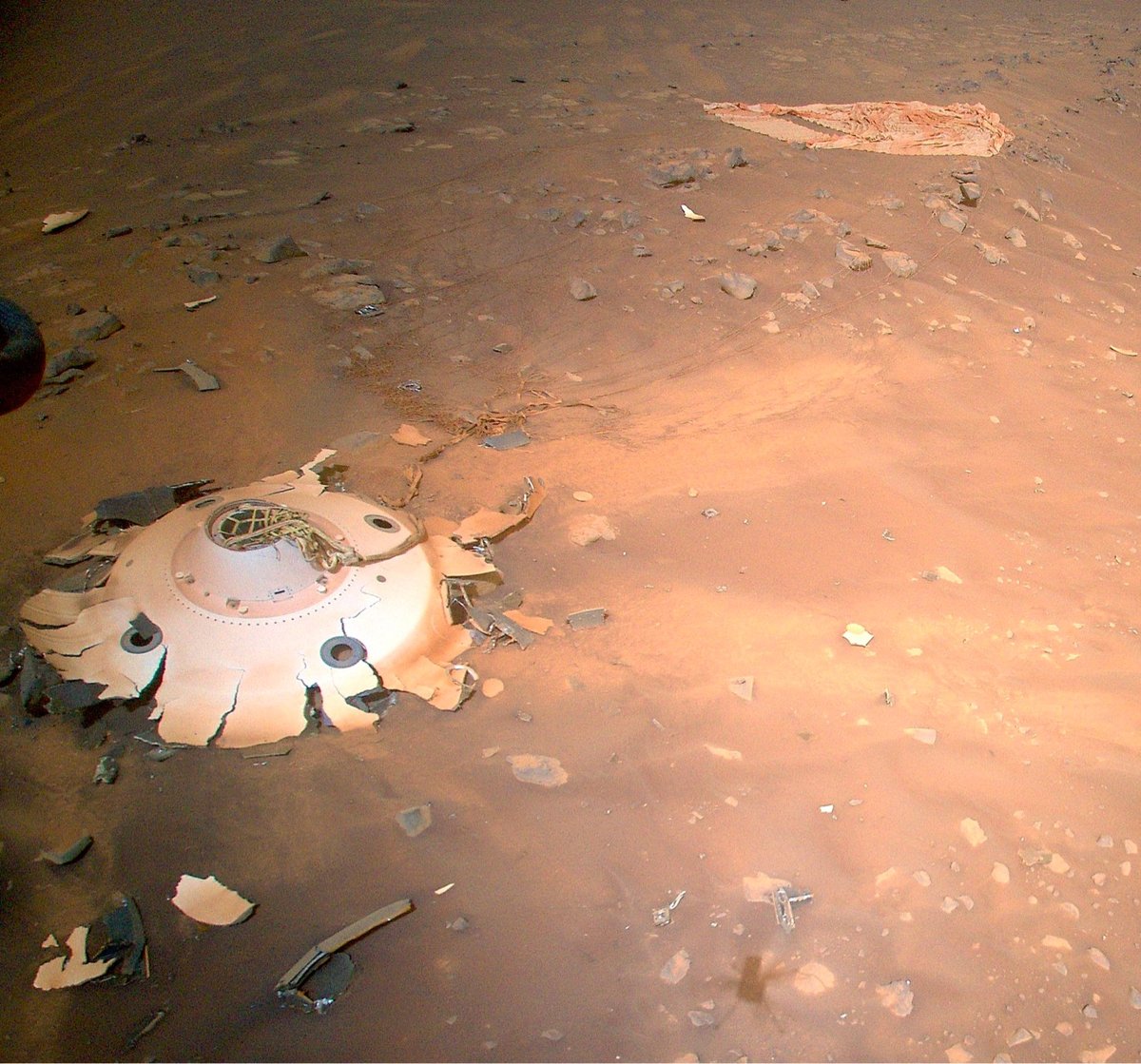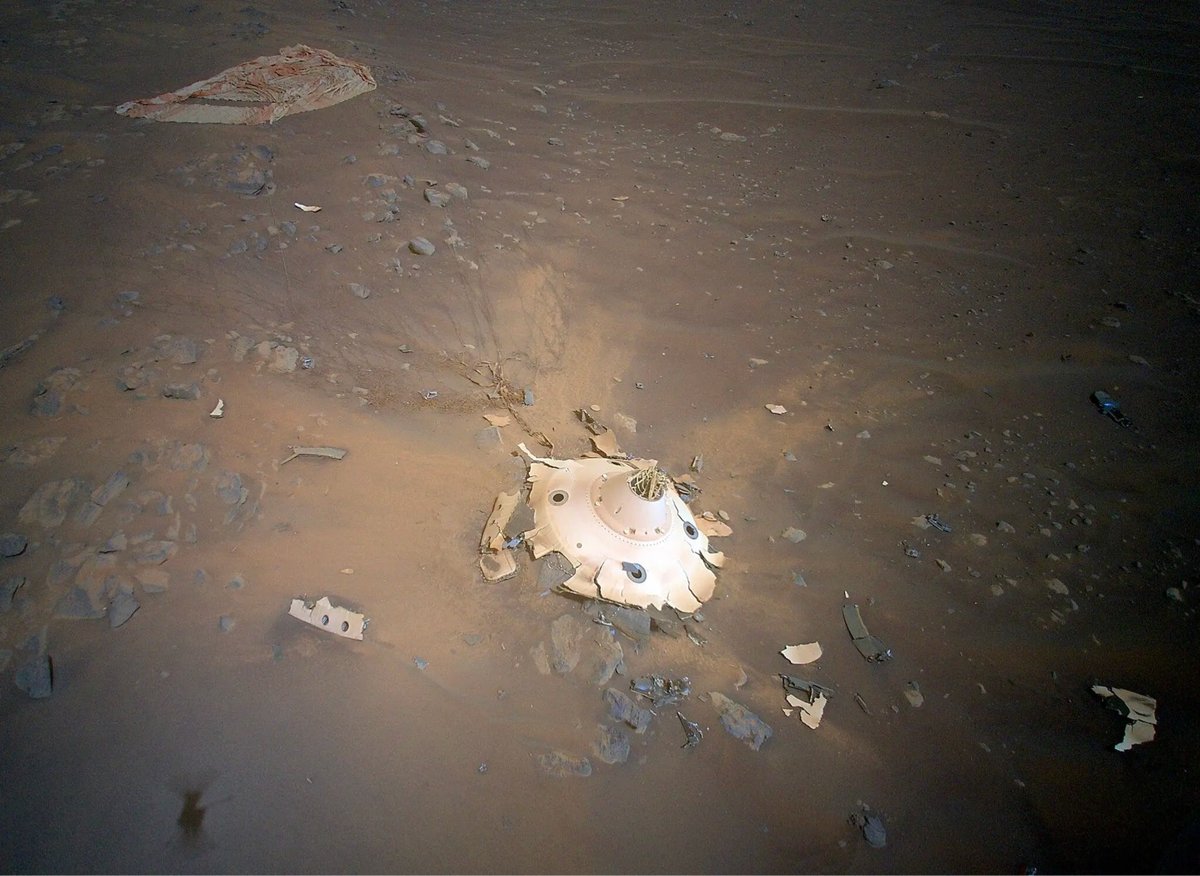Mars Helicopter Spots Perseverance Rover’s Landing Debris


On the 26th flight of Ingenuity, NASA’s helicopter on Mars, it spotted and photographed the wreckage of the Perseverance rover’s landing gear, protective shell, and parachute. From a NY Times article on the photos:
“There’s definitely a sci-fi element to it,” Ian Clark, an engineer who worked on Perseverance’s parachute system, said of photographs released on Wednesday. “It exudes otherworldly, doesn’t it?”
Part of the reason NASA had Ingenuity go take a look is to see how all of that equipment held up during the landing process. Data from the photos will inform future missions.
“Perseverance had the best-documented Mars landing in history, with cameras showing everything from parachute inflation to touchdown,” said JPL’s Ian Clark, former Perseverance systems engineer and now Mars Sample Return ascent phase lead. “But Ingenuity’s images offer a different vantage point. If they either reinforce that our systems worked as we think they worked or provide even one dataset of engineering information we can use for Mars Sample Return planning, it will be amazing. And if not, the pictures are still phenomenal and inspiring.”
In the images of the upright backshell and the debris field that resulted from it impacting the surface at about 78 mph (126 kph), the backshell’s protective coating appears to have remained intact during Mars atmospheric entry. Many of the 80 high-strength suspension lines connecting the backshell to the parachute are visible and also appear intact. Spread out and covered in dust, only about a third of the orange-and-white parachute — at 70.5 feet (21.5 meters) wide, it was the biggest ever deployed on Mars — can be seen, but the canopy shows no signs of damage from the supersonic airflow during inflation. Several weeks of analysis will be needed for a more final verdict.
It is really remarkable, the images we’re seeing from Mars, taken by a robotic helicopter.





Stay Connected